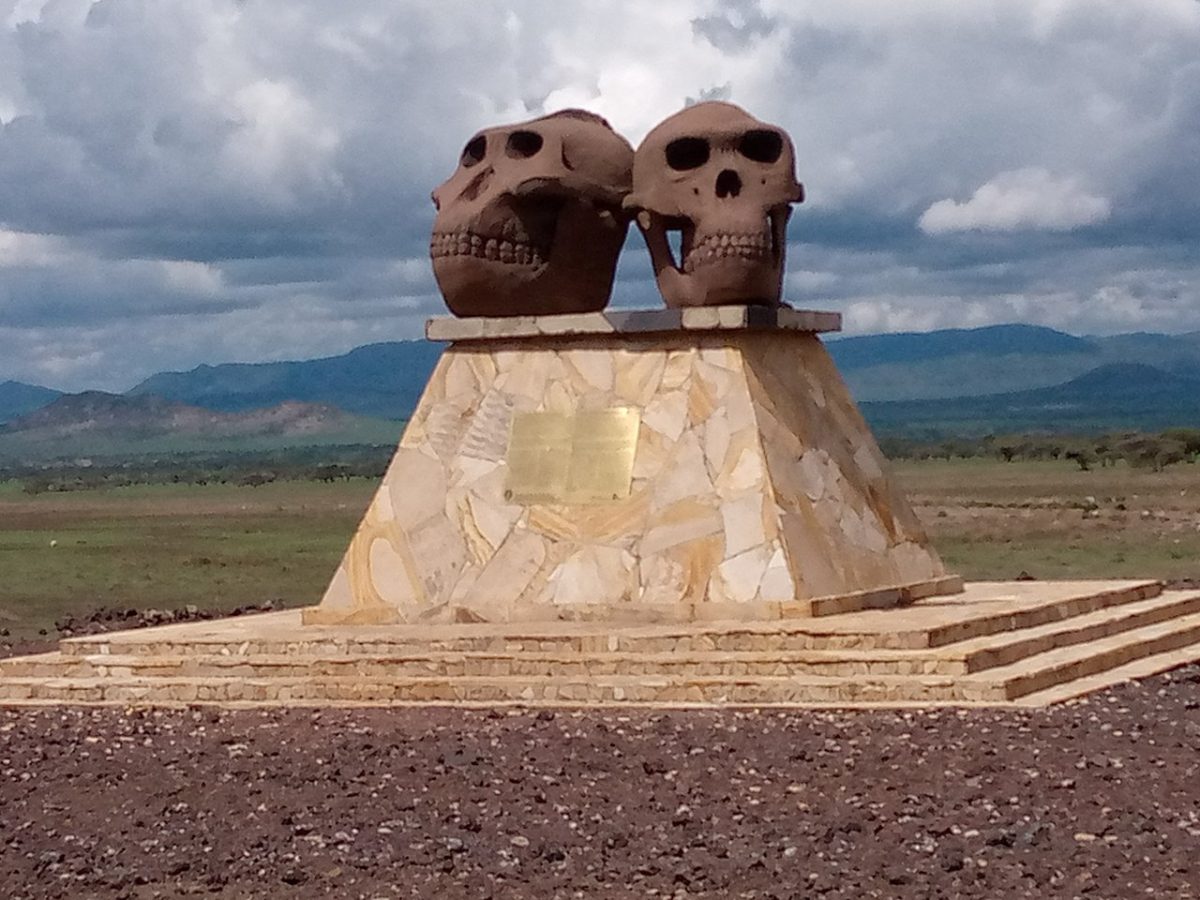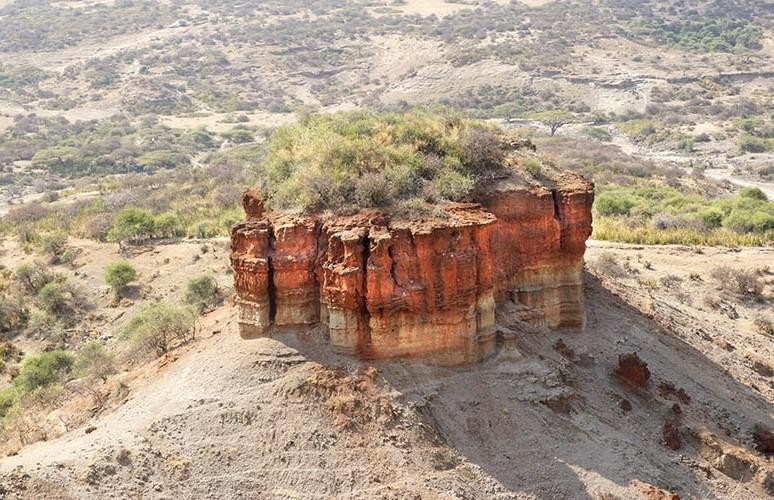Explore Olduvai Gorge in Ngorongoro Conservation Area
Investigate the Olduvai Gorge within Tanzania’s Ngorongoro Conservation Area: The Olduvai Gorge, also known as the Oldupai Gorge, is one of the most important historical sites globally, located in northern Tanzania. The initial evolutionary evidence for bipedalism and tool use in humans was uncovered here. It is a principal tourist destination situated in the Ngorongoro Conservation Area, deserving of exploration during your safari in the Ngorongoro Crater or Serengeti National Park.

Ensure to visit and explore this renowned archaeological site in East Africa during your Tanzania safari tour. For those intrigued by history or human ancestry, a visit to the Olduvai Gorge is essential. Annually, thousands of individuals converge at the Olduvai Gorge to explore the origins of our ancestors, who emerged over 1.75 million years ago. Here, you may appreciate the gorge’s stunning panoramas and learn about its archaeological findings by exploring the museum’s displays.
What is Olduvai Gorge?
The Olduvai Gorge is one of the most important fossil sites globally. The gorge is located within the Ngorongoro Conservation Area, a World Heritage Site of over thirty kilometers in length and around three hundred feet in depth. The evolutionary finding of some of the oldest evidence of human development has rendered it renowned.
In 1960, the Leakey couple, a pair of anthropologists with extensive experience in the region, uncovered the remains of an unnamed hominid. The hominid family, or hominidae in Latin, encompasses the human genus (Homo) and three more genera of large apes: orangutans, gorillas, and chimpanzees. Homo habilis, sometimes referred to as “handy man,” was the inaugural specimen of the genus and a direct progenitor of contemporary humans.
Other recognized excavation sites in Tanzania, such as Laetoli, have yielded extensive information for scientists. However, Olduvai, presently the most recognized designation for the gorge, is the site that garnered the greatest interest. Oldupai and Oldovan are referenced in multiple sources (see Oldovan culture). Another hypothesis suggests that the gorge, initially found by Wilhelm Kattwinkel and situated 150 kilometers (90 miles) from Arusha, was inadvertently named Oldoway. Human history commenced in the Eastern Serengeti, within the Ngorongoro Conservation Area.
In Ngorongoro, a monument with two colossal fossil skulls was erected to commemorate the discoveries that significantly influenced our self-perception. The monument’s statues represent the authentic skulls found in Olduvai, which belonged to two previously unidentified taxa of Homo. The distinctive exhibits are housed at the museum of anthropology and human evolution located in the gorge.

What is the location of Olduvai Gorge?
Olduvai Gorge in Tanzania is situated between Serengeti National Park and Ngorongoro Crater within the Great Rift Valley. This is the destination for anyone interested in archaeology, paleontology, and safari experiences.
Individuals intrigued by human history ought to inquire about the discoverer of the 1.8 million-year-old hominid remains at Olduvai Gorge. While the Leakey name attracts the most attention from Olduvai Gorge, other German archaeologists investigated the site in the early 1900s. Subsequent to the First World War, Louis and Mary Leakey journeyed to Berlin to examine the relocated fossils following their discovery of early hominid artifacts. The fossils in Berlin, being about contemporaneous with those Louis had unearthed in Kenya’s Kariandusi prehistoric site, prompted the hypothesis that the canyon could contain evidence of stone tools. He unearthed hand axes there; explore the Olduvai Gorge.
The Leakey family is primarily credited with the majority of findings and excavations in Olduvai Gorge, where they uncovered the earliest evidence of human technology. The first documented evidence of the tool industry is the utilization of tools by hominids.
Evidence of bipedal hominids was also present in the same location. Among the earliest evidence of bipedal locomotion in humans are the almost 3.5 million-year-old hominid footprints preserved in volcanic rock. A great deal has been gleaned about civilization and the nascent phases of human culture from the evidence uncovered in the Gorge.
Excursion and exploration of Olduvai Gorge
Many of the excavation sites remain operational today. Archaeologists persist in their quest for further petrified remnants of ancient civilizations. Certified tour guides provide guided excursions of the region and elucidate the historical significance of Olduvai Gorge, while a modest museum presents further information and enlightening exhibits for your exploration. Individuals intending to embark on a safari in the Northern Tanzania Safari Circuit and seeking insight into the history of our ancestors should visit Olduvai Gorge. If this blog has prompted you to contemplate a trip to Tanzania, please contact us for complimentary, impartial guidance. We would be delighted to receive your response; explore the Olduvai Gorge.
IS THE OLDUVAI GORGE WORTHY OF TOURIST VISITATION?
We recommend visiting the on-site museum, situated roughly 5 kilometers from the monument along the main road, if you wish to gain further insight into the cultural and historical significance of the Oldupai Gorge. At the gorge’s precipice, it offers excellent views and features an educational museum detailing the gorge’s extensive history. In addition to many artifacts from the era, it exhibits fossils of humans and other creatures.
With adequate preparations, the site, situated near the primary safari route, permits a small diversion. The prize includes a visit to a significant site in human history, captivating vistas, and the museum. Travel north from the gorge to the shifting dunes for a more comprehensive Tanzania wildlife safari experience. It measures 100 meters in length and around 9 meters in height. The dark sand predominantly consists of highly magnetic volcanic ash. This maintains the cohesion of the crescent-shaped arrangement, even in the wind. Upon your approach, it should not have traversed a significant distance given its movement velocity of 17 meters per annum.
Tanzania possesses numerous attractions. The Olduvai Gorge is especially distinctive for archeology enthusiasts. Regardless of whether you are embarking on a shared or private safari, we are pleased to address any inquiries you may have and aid you in organizing your safari holiday to Tanzania. We remain current on all tourism-related developments in Tanzania; therefore, please reach out to us! Your optimal Tanzanian experience merges your aspirations with our expertise.
WHAT TO EXPECT AT THE OLDUVAI GORGE?
A newly established museum was inaugurated in October 2017. The preeminent natural history and scientific research institution in East Africa is situated at the Olduvai Gorge Site. The new museum enhances awareness of the Olduvai Gorge area and the importance of its archeological findings among visitors. The newly established museum, situated within the Ngorongoro Conservation Area, enhances visitors’ experiences by providing additional attractions as they journey between Serengeti National Park and Ngorongoro Crater on their safari.
At this exceptional paleoanthropological site, engage with historical antiquity. The new museum contains a diverse array of exhibits, including artifacts collected from notable locations. The museum’s features include exhibits on early Stone Age findings and cultural displays of the Datoga, Masai, and Hadzabe peoples who formerly inhabited the Ngorongoro Conservation Area. Investigating the Olduvai Gorge.
Laetoli is situated about 60 kilometers away. Visitors can observe archaic human footprints, preserved in volcanic rock, dating back 4 million years. Early evidence of human development has been discovered in the Olduvai Gorge, a place renowned for its evolutionary significance. A visit to the Olduvai Gorge Museum is highly recommended, particularly for those with an interest in archaeology and palaeontology, whether one is in Tanzania on a safari or to engage with the local culture.
